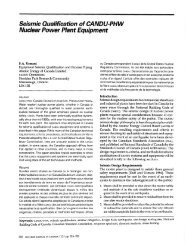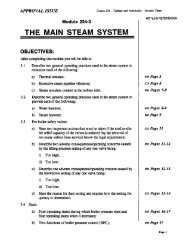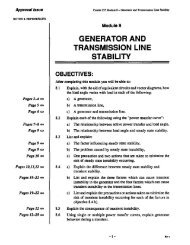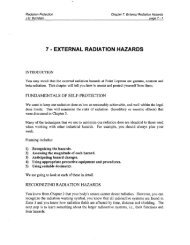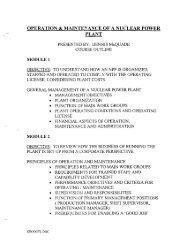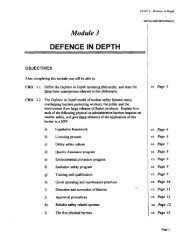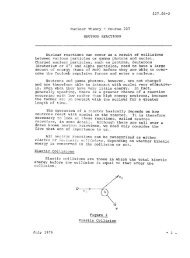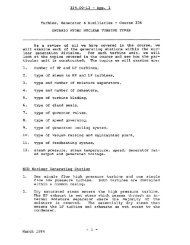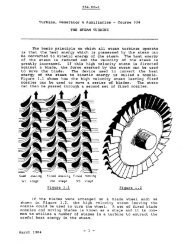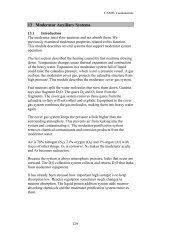Reactor Control Systems of Qinshan Phase III CANDU ... - canteach
Reactor Control Systems of Qinshan Phase III CANDU ... - canteach
Reactor Control Systems of Qinshan Phase III CANDU ... - canteach
Create successful ePaper yourself
Turn your PDF publications into a flip-book with our unique Google optimized e-Paper software.
At low power, the total reactor thermal power is calculated from temperature rise<br />
measurements across the reactor. The regulating system controls total reactor flux level<br />
and flux tilt, the latter by equalizing measured power in 14 regions associated with 14<br />
liquid zone controllers. Spatial flux control is required only at relatively high reactor<br />
power (above 20% full power) where the possibility <strong>of</strong> xenon-induced instabilities exists.<br />
Total reactor power is determined by a combination <strong>of</strong> ion chamber signals (at low<br />
power) and platinum-clad in-core detector signals (at high power). The cross over occurs<br />
around 10% full power. Because neither measurement is absolute, the flux signals are<br />
continuously calibrated against reactor power measurements based on thermal signals.<br />
The 14 zone power measurements are based on the platinum-clad flux detectors. Absolute<br />
measurements are less important here because the spatial control system simply equalizes<br />
measurements. However, a single flux measurement may not be entirely representative <strong>of</strong><br />
the average power in a region <strong>of</strong> the core due to local flux disturbances caused by<br />
refuelling. Therefore, the platinum-clad detector signals are also calibrated continuously<br />
against vanadium detector measurements <strong>of</strong> average zone power.<br />
<strong>Reactor</strong> Regulating System (RRS)<br />
The reactor regulating system is that part <strong>of</strong> the overall plant control system that controls<br />
reactor power, and maneuvers reactor power in accordance with specified setpoints. See<br />
Figure 2.<br />
<strong>Reactor</strong><br />
Setpoint<br />
BPC<br />
Setbacks<br />
Operator<br />
Stepbacks<br />
Trips<br />
CJNPE_paper990401<br />
11/21/05<br />
Ep<br />
<strong>Reactor</strong> Regulating System<br />
Reactivity Devices<br />
Zone <strong>Control</strong>lers<br />
Absorbers<br />
Adjusters<br />
Poison Addition<br />
SOR Withdrawal<br />
Ri<br />
Neutronics<br />
Feedbacks<br />
Xenon<br />
Power Measurement<br />
& Calibration<br />
Feedbacks from<br />
Moderator Temp<br />
Fuel Temp<br />
Void<br />
Figure 2: <strong>Reactor</strong> Regulating System Block Diagram<br />
5<br />
Flux<br />
Detectors<br />
Fuel and<br />
Heat Transport Lags<br />
Instrumented<br />
Channels




